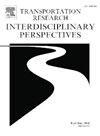Responses to anti-speeding television advertisements in seven large cities in low- and middle-income countries
IF 3.9
Q2 TRANSPORTATION
Transportation Research Interdisciplinary Perspectives
Pub Date : 2025-05-01
DOI:10.1016/j.trip.2025.101453
引用次数: 0
Abstract
Undertaking formative research to guide development of effective communication messages is a key step in producing evidence-based road safety campaigns. This study examined data from road safety anti-speeding communication message testing research in seven cities in low- and middle-income countries: Accra, Ghana; Addis Ababa, Ethiopia; Bandung, Indonesia; Bangkok, Thailand; Bogotá, Colombia; Fortaleza, Brazil; and Ho Chi Minh City, Vietnam. The objective of this study was to identify which executional style of anti-speeding message would be perceived by drivers as most effective in influencing them to not exceed speed limits when driving. In each city study, motor vehicle drivers aged 18–44 years rated up to 10 anti-speeding television advertisements on attributes such as comprehension, believability, personal relevance and perceived personal influence and effectiveness. The advertisements tested in each city were coded into four execution categories, according to whether they primarily: (1) focused on the negative consequences of speeding; (2) portrayed personal testimonial stories about harms from speeding; (3) provided science-based information about the mechanics of speeding, braking time and heightened risk of crash-related harm, accompanied by instruction to reduce speeding; or (4) took an enforcement approach regarding risk of detection and punishment for speeding. The results showed that instructional advertisements were rated most highly on communication effectiveness indicators across cities, followed by consequences and testimonial advertisements, with the lowest ratings generally given to enforcement advertisements. Rating scores varied significantly among cities, pointing to the importance of testing road safety messages in the local sociocultural context of the proposed campaign.
对低收入和中等收入国家七个大城市反超速电视广告的反应
开展形成性研究,指导制定有效的传播信息,是开展循证道路安全运动的关键步骤。本研究审查了低收入和中等收入国家七个城市的道路安全反超速通信信息测试研究数据:加纳阿克拉;埃塞俄比亚的亚的斯亚贝巴;印尼的万隆;泰国曼谷;波哥大,哥伦比亚;福塔雷萨、巴西;以及越南的胡志明市。本研究的目的是确定哪种反超速信息的执行风格会被司机认为是最有效的影响他们在驾驶时不超过速度限制。在每个城市的研究中,年龄在18-44岁的机动车驾驶员对10个反超速电视广告的理解、可信度、个人相关性和感知到的个人影响力和有效性等属性进行了评分。在每个城市测试的广告被编码为四个执行类别,根据它们是否主要:(1)关注超速的负面后果;(2)讲述超速危害的个人见证故事;(3)提供基于科学的超速机制、制动时间和碰撞相关伤害风险增加的信息,并附有减少超速的指示;或者(4)对超速行为采取侦查和处罚风险的执法方式。结果显示,在各个城市中,教学广告在沟通效果指标上的评分最高,其次是后果广告和推荐广告,而执法广告的评分最低。不同城市的评分差异很大,这表明在拟议活动的当地社会文化背景下测试道路安全信息的重要性。
本文章由计算机程序翻译,如有差异,请以英文原文为准。
求助全文
约1分钟内获得全文
求助全文
来源期刊

Transportation Research Interdisciplinary Perspectives
Engineering-Automotive Engineering
CiteScore
12.90
自引率
0.00%
发文量
185
审稿时长
22 weeks
 求助内容:
求助内容: 应助结果提醒方式:
应助结果提醒方式:


